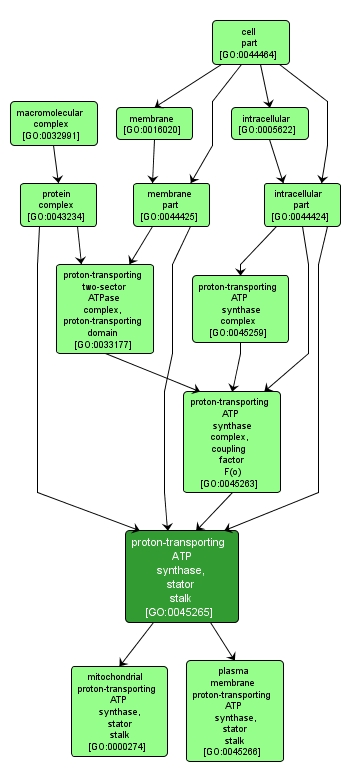GO TERM SUMMARY
|
| Name: |
proton-transporting ATP synthase, stator stalk |
| Acc: |
GO:0045265 |
| Aspect: |
Cellular Component |
| Desc: |
One of two stalks that connect the catalytic core of the hydrogen-transporting ATP synthase to the membrane-associated Fo proteins; is thought to prevent futile rotation of the catalytic core. |
Synonyms:
- hydrogen-transporting ATP synthase, stator stalk
|
|

|
INTERACTIVE GO GRAPH
|














